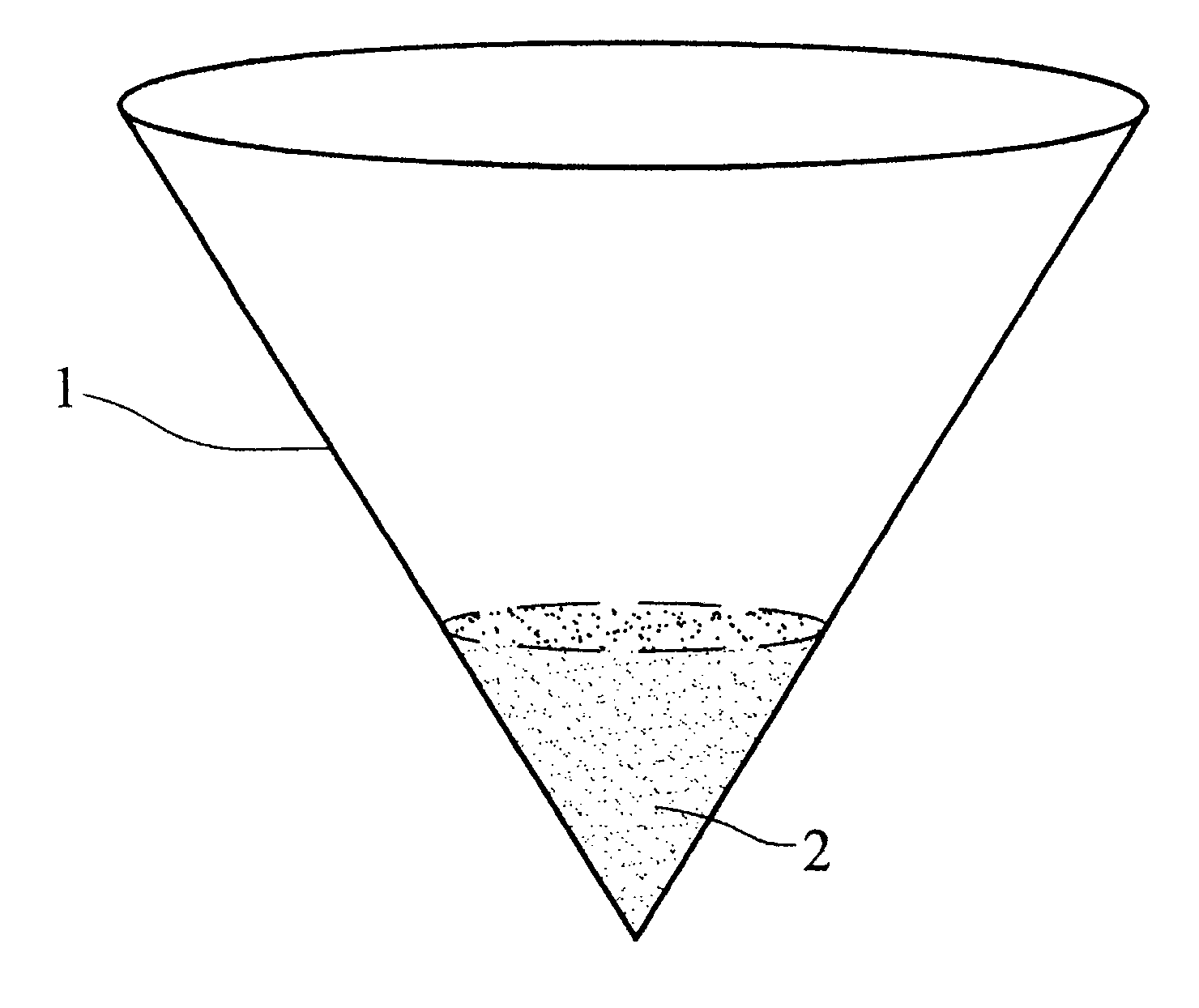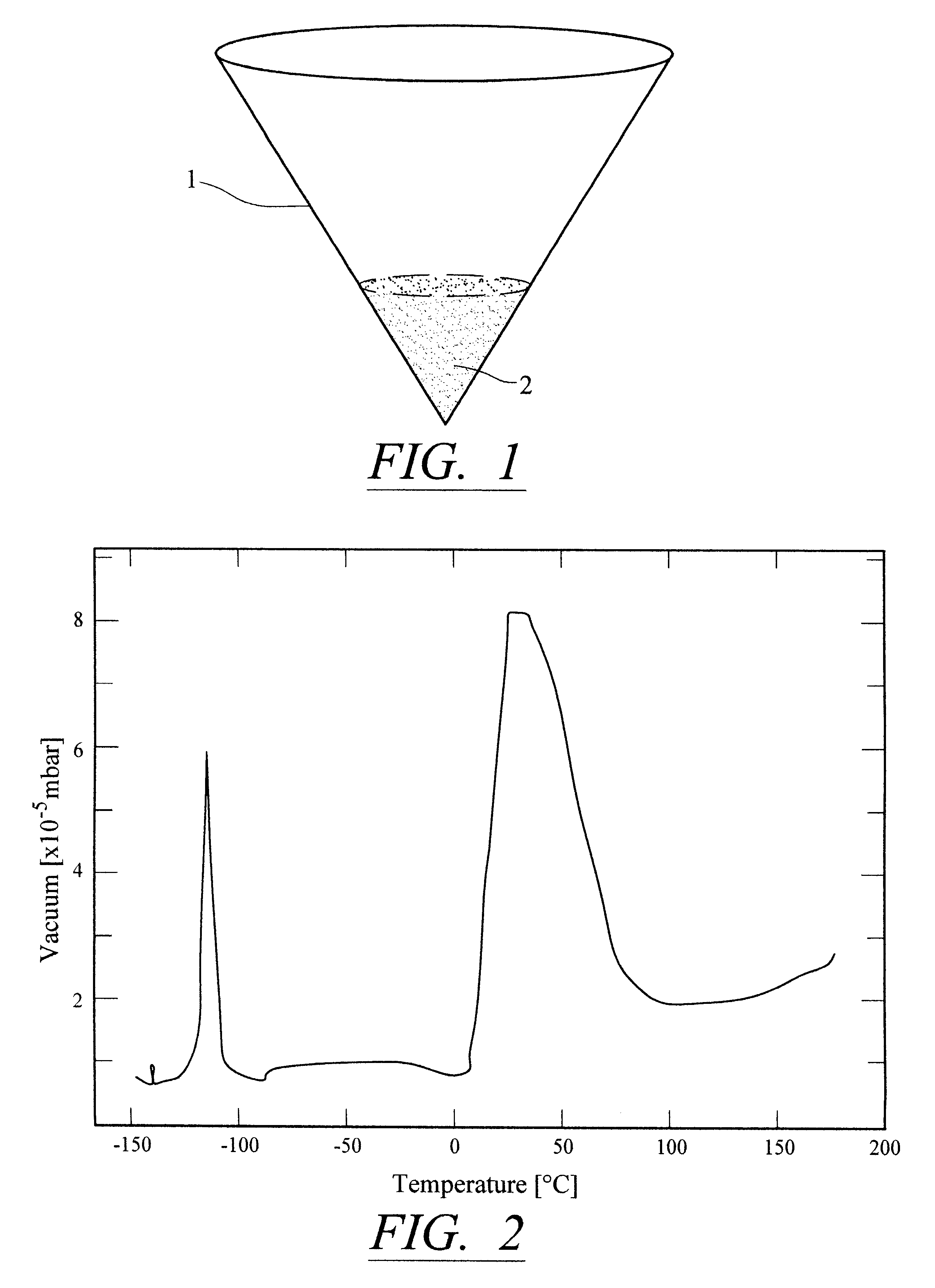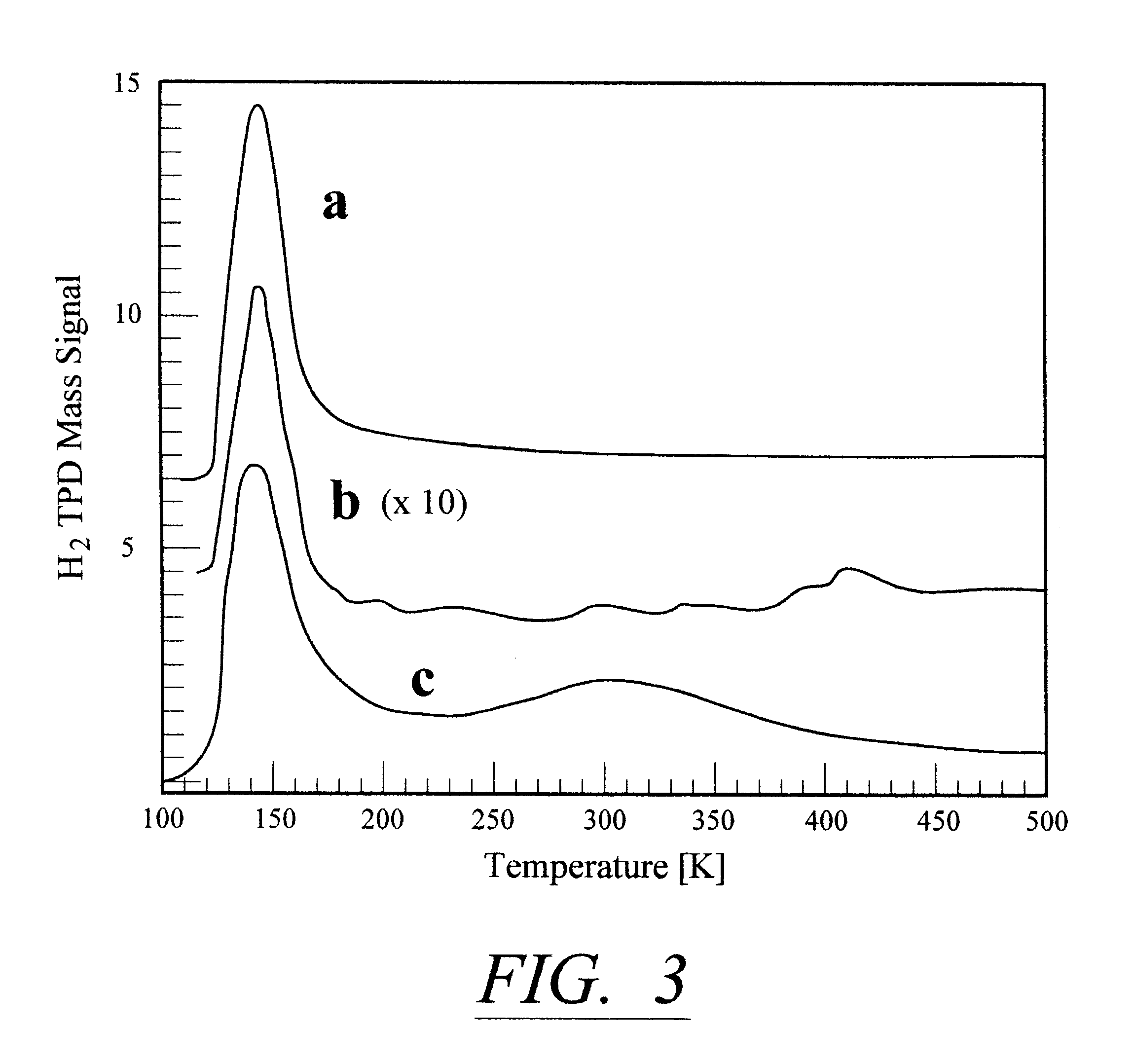Hydrogen storage in carbon material
a carbon material and hydrogen storage technology, applied in the field of hydrogen storage in carbon materials, can solve the problems of low hydrogen content, accompanying capacity loss, storage of hydrogen in vehicles, etc., and achieve the effect of low weight and convenient us
- Summary
- Abstract
- Description
- Claims
- Application Information
AI Technical Summary
Benefits of technology
Problems solved by technology
Method used
Image
Examples
example
An example of the effect of the process conditions on the method for storing according to the present invention shall now be given. A sample of 0.5 g produced by the Kvaerner's CB & H process consisted substantially of cones with large cone angles and a typical length of 1 .mu.m. This sample was placed in the reaction vessel which then was evacuated to about 10.sup.-6 torr. The sample was then pretreated by heating to 775 K in deuterium at a pressure of 760 torr. It is to be remarked that deuterium which is a heavier isotope of hydrogen may be substituted for hydrogen without substantive consequences for the method for storing according to the present invention. The heating took place for an hour and the reaction vessel was then evacuated before cooling to room temperature. An elemental analysis using scanning electron microscopy (SEM) was then performed and showed that the pretreatment effectively removed the oxygen which originally was present in the sample. The uptake of deuteriu...
PUM
| Property | Measurement | Unit |
|---|---|---|
| Temperature | aaaaa | aaaaa |
| Temperature | aaaaa | aaaaa |
| Temperature | aaaaa | aaaaa |
Abstract
Description
Claims
Application Information
 Login to View More
Login to View More - R&D
- Intellectual Property
- Life Sciences
- Materials
- Tech Scout
- Unparalleled Data Quality
- Higher Quality Content
- 60% Fewer Hallucinations
Browse by: Latest US Patents, China's latest patents, Technical Efficacy Thesaurus, Application Domain, Technology Topic, Popular Technical Reports.
© 2025 PatSnap. All rights reserved.Legal|Privacy policy|Modern Slavery Act Transparency Statement|Sitemap|About US| Contact US: help@patsnap.com



